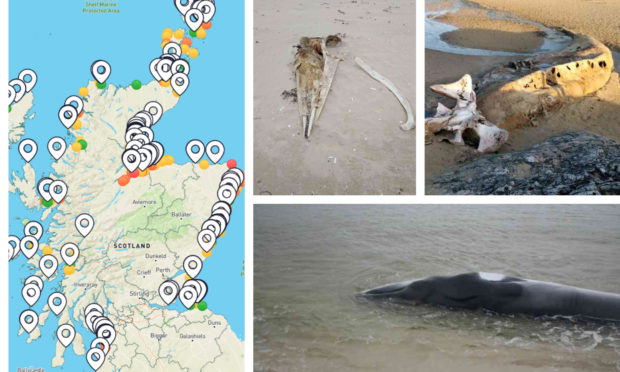An app designed to keep Scotland’s coastlines clean and record sightings of dead marine animals has marked its first year of use.
More than 400 people have downloaded the Scottish Marine Animal Strandings Scheme’s (SMASS) Beach Track application since it launched in July 2019.
The project asks volunteers to install the programme on their phones and note the general cleanliness of the beaches they walk on, and take photos of any deceased whales, dolphins, sharks, turtles or other sea creatures they happen to come across.
Data collected through the app is then used by SMASS to build a “health map” of Scotland’s coasts, direct beach cleans, and improve scientific understanding of the health of Scotland’s waters and the threats facing the country’s sea animals.
Ellie MacLennan, strandings assistant for SMASS, helped to make the app a reality.
She said: “We weren’t too sure what the uptake would be, because obviously hunting for dead things on a beach is not exactly everyone’s idea of fun, but we kind of figured well, there’s an app for everything these days, so why not for strandings?
“Scotland’s coastline is so massive, and there are more and more people spending time running, cycling and walking our coasts so we thought we would give it a go and see if we can get a bit more information about strandings.
“All of the data is useful, even when people don’t report anything, as that can help illustrate where they are and are not potential problems.”
So far, almost 400 miles of Scottish coastline has been analysed by the app’s users and 183 washed-up animals have been logged.
Some of the reports so far include the skeleton of a whale found on Colonsay, the decaying remains of a shark in West Kilbride, and the bones of a small whale found near Culbin Forest, just north-east of Forres.
Ms MacLennan added: “Through the app, you can log both beach walks, and log individual strandings that are then reported directly to the SMASS team.
“The section where you can record how much beach litter present is also important, as beach cleanliness and plastic pollution in Scotland is a growing concern.
“We’ve got some really cool maps that are starting to form from the data people are kindly sending it, which can be used to keep track of the overall health of our beaches all around the coasts.
“The information the app collects is accessible for anyone that wants to use it for good.”
The free app can be downloaded on both iPhone and Android devices. For more information, visit www.beachtrack.org
